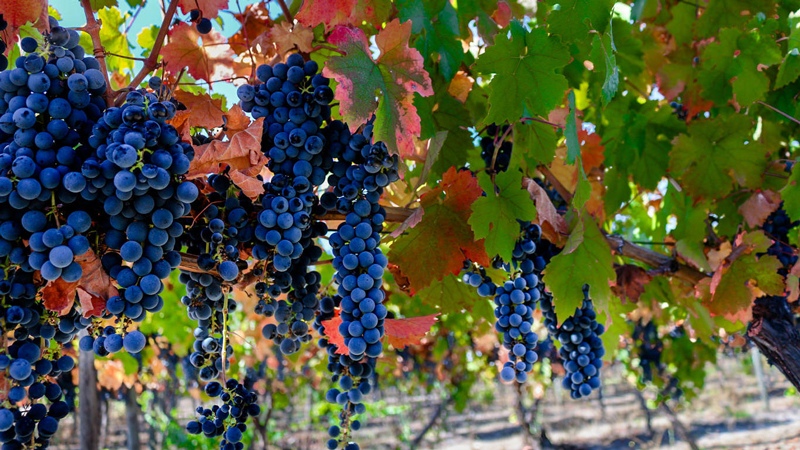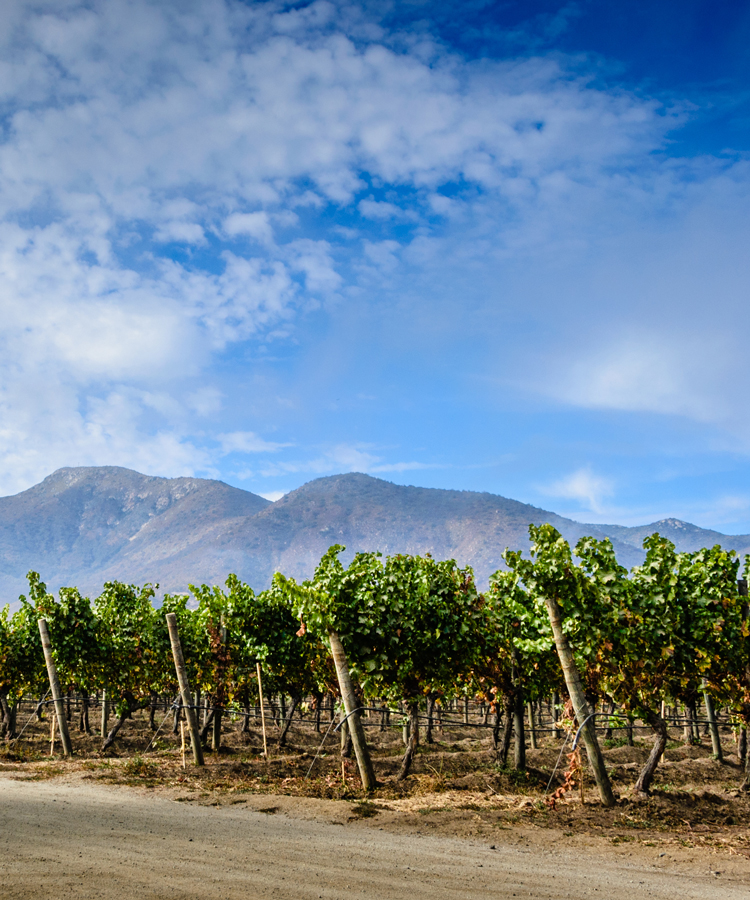Chile may be a New World country, but don’t call its wine industry young. While there has been an explosion of quality Chilean wine appearing stateside over the past 30 years, its first grapevines were planted as early as the 1500s. European immigrants brought more varieties, particularly from Bordeaux, to Chile in the 1800s. Until the 1990s, most of the country’s wine was consumed by its residents. As Chilean winemakers started exporting more wine, the world noticed both the quality and value of Chile’s wine industry.
Chile’s wine industry is founded on diversity, which is why an overview of Chile’s climate, grapes, and regions barely skims the surface of what this exciting country has to offer. This narrow strip of land can produce festive sparklers, crisp and refreshing whites, and bold, world-class reds, plus every style in between.
Get ready to take a trip south of the equator. This is Chilean wine 101.
Overview
Chile is located on the western coast of South America, but its topography creates something akin to a pseudo-island, isolating its vineyards from the elements. Bordered by the cool Pacific Ocean to the west and the snow-capped Andes to the east, by the Atacama Desert to the north, and the far reaches of Patagonia to the south, Chile is naturally protected on all sides.
As a result of this protection, phylloxera, the vineyard pest that decimated most of the world’s vineyards in the 1800s, never touched Chilean vines. In fact, Chile is the only major wine-producing country free of phylloxera. The country is thus home to some of the world’s oldest vines, many of which are ungrafted, or planted on their own rootstocks, to this day. As a grapevine grows older, the grapes it produces become more concentrated and nuanced, making these pre-phylloxera vines such an asset to Chilean winemakers.
Chile is the world’s narrowest country, averaging just 110 miles in width, but its coastline stretches nearly 2,600 miles — farther than the distance from New York to Los Angeles. The climate in the country’s wine regions therefore varies dramatically, but all benefit from abundant sunshine and dry conditions, which handily combat disease. Although the lack of water can be challenging for winemakers, Chile’s dry climate makes it a natural hub for organic, biodynamic, and sustainable wine production. In fact, 75 percent of all exported Chilean wine is sustainably produced — a remarkable feat, considering bottle export numbers to the U.S. alone reached $168,391,257 in 2017.
Key Grape Varieties
If other countries hinge their wine industries on one or two grape varieties, Chile is quite the opposite. Warm, inland regions provide excellent conditions to ripen powerful grapes, while cool pockets of coastal or high-elevation vineyards are found in both the north and the south, focusing on more delicate varieties. Many Chilean winemakers conduct rigorous soil studies to determine the best grape varieties for their vineyard sites.
While many associate sunny Chile with rich red wine, white grapes have garnered quite a bit of attention over the past decade. The northerly Limarí Valley, Casablanca Valley, and San Antonio Valley, and the Pacific-perched Leyda Valley specialize in Sauvignon Blanc and Chardonnay grapes. These Sauvignon Blancs tend to be bright, citrusy, and fruit-forward, with plenty of acidity and undertones of fresh grass. Chilean Chardonnay, on the other hand, can be made in a range of styles but is typically well balanced, with both roundness and fresh acidity.
For many, Cabernet Sauvignon is king in Chile. It occupies top plots in warmer regions like the Maipo Valley, Rapel’s Colchagua Valley and Cachapoal Valley, and the Aconcagua Valley. Produced either as a varietal wine or the majority component of a blend, Chilean Cabernets tend to be rich and cherry-fruited, with earth, spice, and the potential to age for decades.
Cabernet Sauvignon might be Chile’s most important red variety, but Carménère is the country’s niche grape. Considered the “lost” sixth grape of Bordeaux, it reappeared when much of the country’s Merlot vines were genetically identified as Carménère in the 1990s. Its green edge distinguishes it from the former, though they share the same smooth red fruit. As winemakers continue to learn the ins and outs of their adopted variety, more intriguing Carménère wines appear in the U.S. each year.
Pinot Noir is also a new favorite in Chile, gaining traction with juicy, fresh Casablanca and San Antonio wines. And deeply colored Syrah is finding ground in both cool regions like Elqui and warmer regions like Colchagua. Though Chile has become known for producing quality varietal wines, many of Chile’s top wines are red blends, made from Bordeaux varieties, Rhône varieties, or other creative combinations.

Three Regions to Know
Chile’s diverse wine regions are largely comprised of east-west running valleys, which help pull ocean currents from the Pacific to cool vineyards and preserve acidity at night, even in the hottest winemaking areas.
Chile’s most established and quality-driven wine regions are primarily located in the Central Valley, around and within the city of Santiago. The Maipo Valley is located just south of the city and is home to some of Chile’s most iconic Cabernet Sauvignon wines. Dry, sunny conditions fully ripen Cabernet Sauvignon grapes, some of which are planted at higher elevations in the Andean foothills, gaining the benefit of altitude. Carménère and Merlot are also found in Maipo’s vineyards, leading some to call it “the Bordeaux of Chile.”
South of the Maipo Valley is the Rapel Valley, which is divided into the Cachapoal Valley and the Colchagua Valley. This latter region is one to watch, particularly for well-crafted, world-class Carménère. While Cabernet Sauvignon still outnumbers Carménère in this warm region on the edge of the Chile’s coastal mountains, winemakers are producing exciting examples of the variety here.
Though the cool, hilly Casablanca Valley has only been producing quality wine for 30 years, it has quickly become the country’s go-to source of crisp whites. Casablanca is located just 20 miles from the Pacific Ocean, extending ripening time and making it an excellent home for cool-climate varieties like Sauvignon Blanc, Chardonnay, and Pinot Noir.
The Next Chapter
In the last three decades, Chile’s centuries-old winemaking history made considerable advancements. Now, enthusiastic members of the wine industry are founding new appellations, distinguishing coastal and Andean zones, and rediscovering old, ungrafted vines.
The global wine community is taking notice. Some of the most influential international producers are investing in Chilean winemaking projects, including Domaines Barons de Rothchild (Lafite), owner of Château Lafite Rothschild, and the Marnier Lapostolle family, founders of Grand Marnier. The quality of Chile’s wines even stole the spotlight at the 2004 Berlin Tasting, when two Chilean wines took the first- and second-place medals in the blind tasting, ahead of icons like Château Lafite, Château Margaux, Tignanello, and Sassicaia.
Whether you’re looking for a vibrant white or a lofty red; a value-oriented, everyday sipper or an unforgettable, age-worthy selection; a friendly crowd-pleaser or an out-of-the-box oddity, there’s a Chilean wine for you. It’s just waiting for you to discover it.
This article is sponsored by Wines of Chile. Taste the unexpected.
